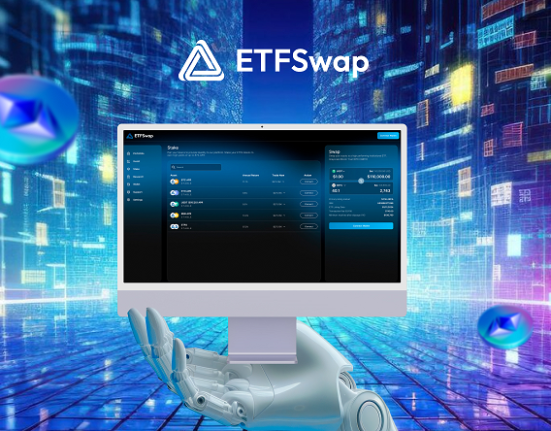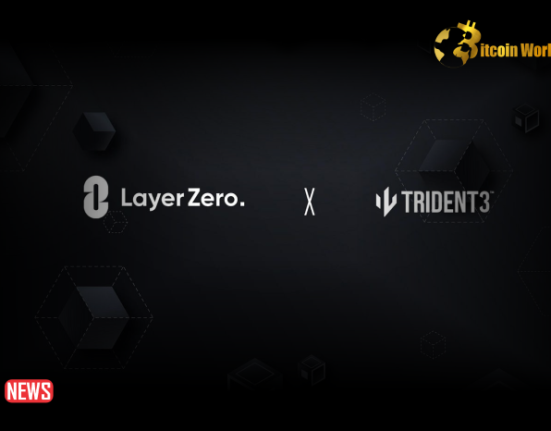The integration of artificial intelligence (AI) and blockchain is increasingly prevalent in the Web3 space and welcomes a new trailblazing mechanism developed by Qubic: Useful Proof-of-Work (uPoW). This consensus mechanism ensures not just the security of the blockchain, it utilizes computational power to employ AI tasks to create dual-purpose utility unseen in the space.
The innovation behind Qubic’s uPoW make it one of the top contenders throughout Web3, quickly becoming taking its place as one of the top consensus mechanisms for AI-driven platforms. Through this innovation, uPoW introduces a brand new level of efficiency to blockchain-driven AI capabilities and ascends beyond the potential of traditional consensus mechanisms.
Consensus Mechanisms: A Brief History
Traditional consensus mechanisms like Proof-of-Work (PoW) and Proof-of-Stake (PoS) have been fundamental to blockchain technology, security, and functionality. PoW was popularized by the first cryptocurrency, Bitcoin (BTC), and has secured a plethora of blockchains through collaborative computational efforts.
However, PoW is one of the most demanding consensus mechanisms and is regularly criticized for its huge energy consumption — likened often to the energy used by certain regions or small countries. On the other hand, PoS provides a significant energy-use offset in comparison to the PoW mechanism, but opens the door to centralization if a small number of holders gain significant stake in the mechanism.
Qubic’s uPoW mechanism addresses and overcomes the limitation of traditional consensus mechanisms like PoW and PoS through AI advancements and energy-efficient decentralization. Using computational resources for training AI models instead of mining, Qubic makes the best use of energy consumption to provide benefit and value to all.
Empowering Through uPoW
Qubic utilizes the Quorum Protocol, built on a quorum-based system involving 676 Computors to execute smart contracts and validate transactions fast and efficiently. The process ensures reliability and consensus by confirming that at least 451 Computors agree on the results before finalization — maintaining Qubic’s network integrity.
The mechanism behind uPoW involves Computors which solve complex mathematical problems in a similar fashion to PoW, but without the drawbacks. Computers function as solution providers and computational power contributors to both network security and AI-related tasks — like training neural networks.
Through this approach to consensus, Qubic merges AI training into the process to continuously advance AI capabilities and make sure the network remains robust at all times.
uPoW: Advantages for AI Platforms
Through the uPoW consensus mechanism, AI platforms can fully harness the untapped potential of computational power of mining, developing scalable solutions for blockchain-driven AI tasks. Platforms like Qubic establish distributed computing networks capable of handling huge AI computational loads that many centralized systems struggle with.
Through its quorum of Computors for validation processes, uPoW maintains security throughout every step of every task while adhering to the fundamentals of decentralization. The use of the uPoW system holds up far stronger against blockchain attacks than other consensus mechanisms, which are often vulnerable to double spending or the infamous 51% attack.
uPoW also makes the most of the blockchain side of AI integration, ensuring all transactions and computations are publicly accessible, transparent and traceable on the immutable blockchain. This element shines through most for AI applications that handle and manage data, ensuring information accuracy, reliability, and security.
Qubic’s Role in uPoW
Founded by Sergey Ivancheglo, a mastermind behind IOTA and NXT, Qubic integrates the power of uPoW into its blockchain-drive AI democratic platform. True to Ivancheglo’s vision, the platform utilizes decentralized computational power to ever-advance the capabilities of AI equally for all users.
Qubic utilizes Computors, Candidates, and the Arbitrator to create a unique structure not seen before in the Web3 space. This composition ensure the powers that ensure network functionality have clear power divides which maintain a decentralized equality throughout the blockchain.
Computers are tasked with executing smart contracts and training up AI models, while Candidates aim to become Computors by contributing to AI tasks without immediate compensation. The fundamental Arbitrator manages AI training tasks but never has influence over smart contracts, token distribution or voting to ensure decentralization.
Challenges to Tackle
Despite introducing brand new avenues of AI-blockchain innovation, Qubic is not without its challenges — faced by all new technologies that seek to overhaul traditional systems. Facing challenges like token value stabilization and user-friendly interface navigation and use, Qubic works hard to stand a strong against competitors like TAO (Bittensor) and Kaspa.
TAO uses decentralized machine learning and rewards users with tokens for contributing computational power to AI model training, similarly to Qubic. However, through uPoW, Qubic creates a holistic approach to computational resource usage, securing the blockchain and integrating AI training under one umbrella.
Kaspa, known for its speed and scalability, focuses mainly on transaction throughput and network efficiency. Once again, Qubic stands out from the crowd here as well through direct AI integration into blockchain technology — creating an efficiency computational power resource for AI tasks and new market category development.
Qubic: A Step Ahead of the Competition
Unleashing the full potential of the uPoW mechanism, Qubic turns inefficient mining into an beneficial and efficient productive process for computational power use toward the advancement of AI. Paired with its fair launch that had no premined tokens nor venture capital (VC) funding, Qubic promotes decentralization, transparency, and fairness for all users.
AI tasks are just the beginning. Through the Aigarth layer, Qubic is able to utilize miner power in efforts to create artificial neural networks that further democratize access for all future users of ever-improving AI technology.
When considering the road ahead for Qubic and uPoW, this new innovative consensus mechanism represents a huge step forward for blockchain-driven AI integration. Fueling security and transparency blockchain technology powered by AI, Qubic’s uPoW advancement is set to empower the future of decentralized AI.









